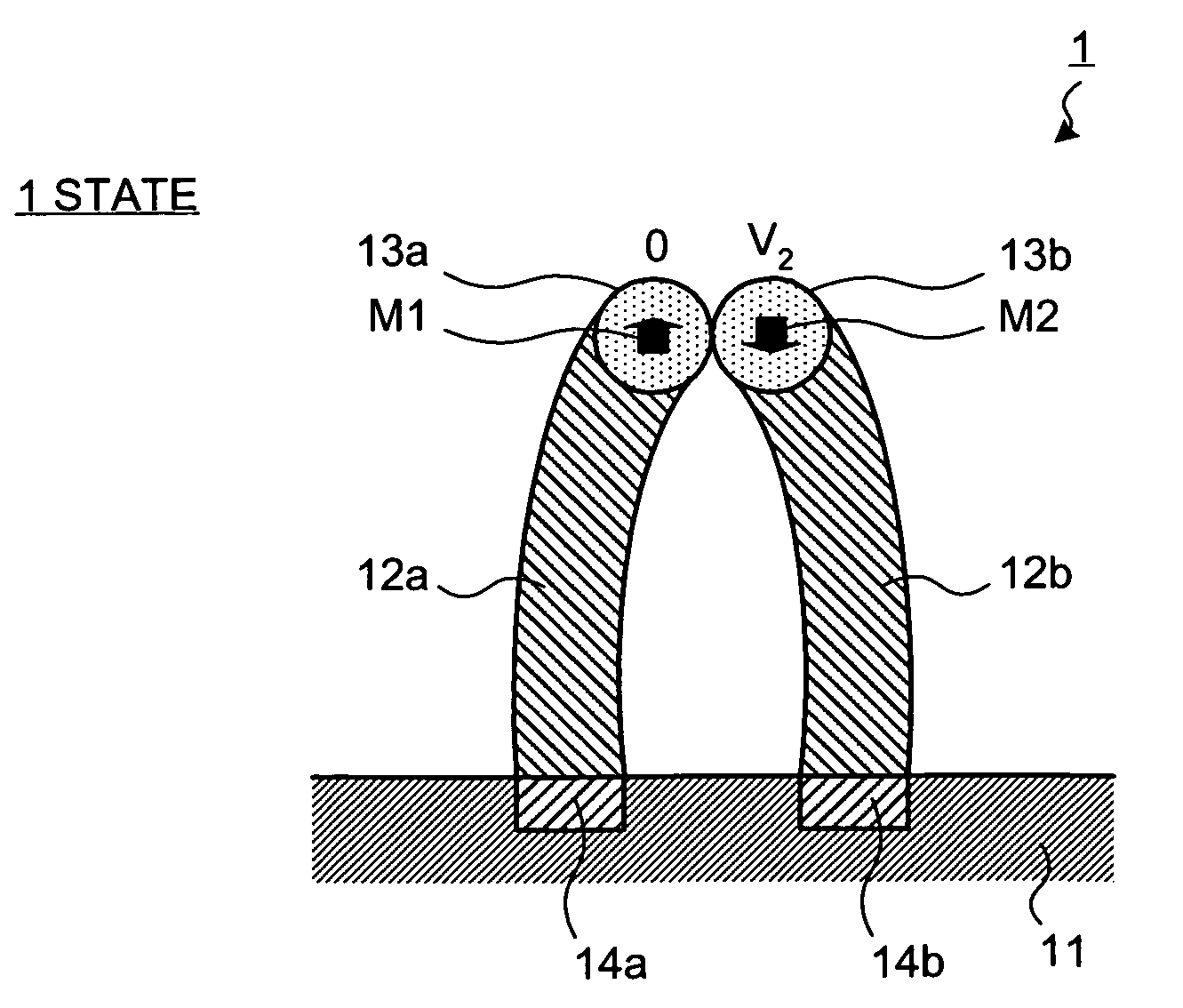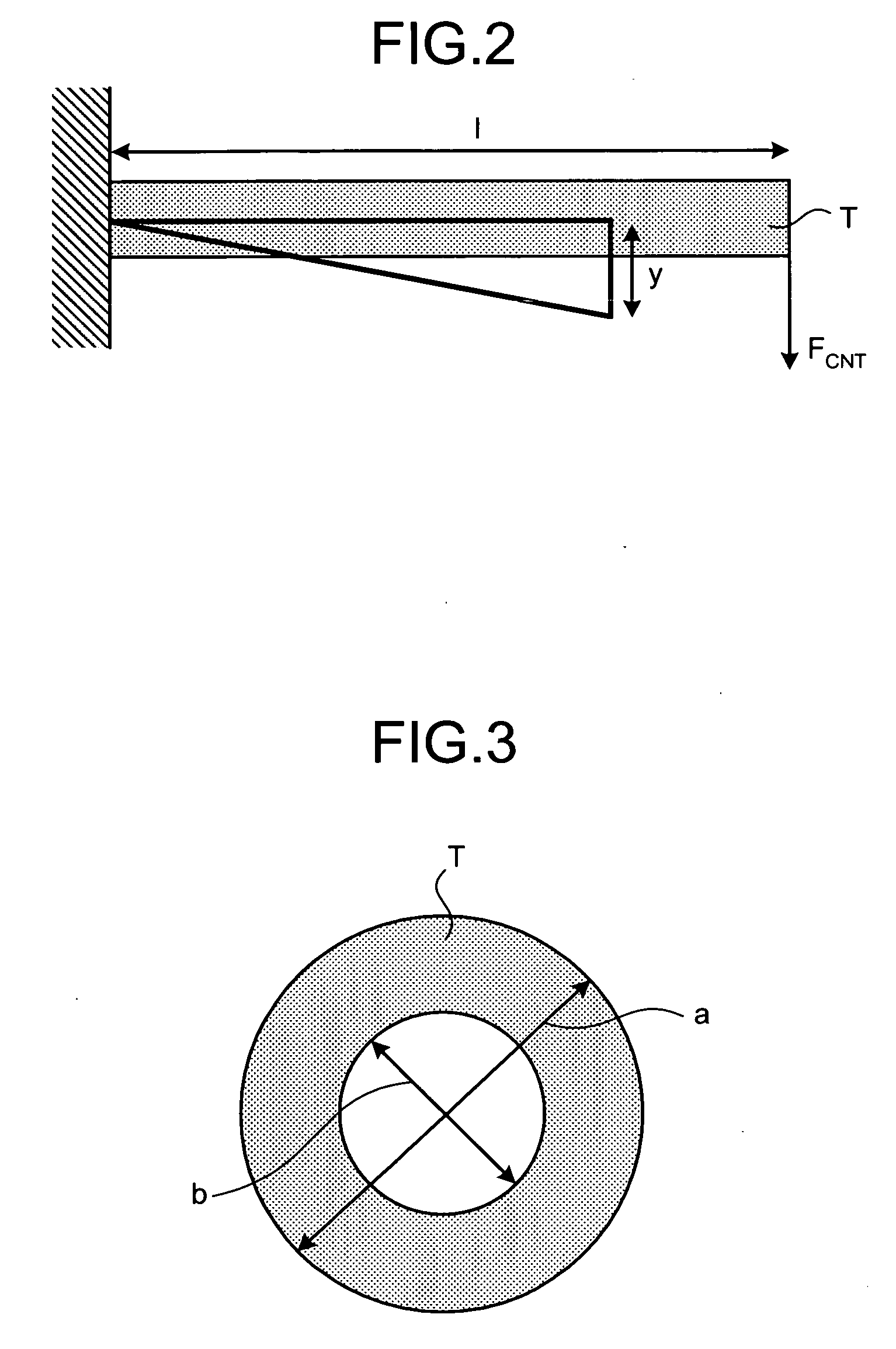Switch element, memory element and magnetoresistive effect element
a technology of magnetoresistive effect and memory element, which is applied in the direction of magnetic field-controlled resistors, digital storage, instruments, etc., can solve the problems of not being suitable for mass production, not having a selective growth method of carbon nanotube having a specific structure, and significantly deteriorating element properties
- Summary
- Abstract
- Description
- Claims
- Application Information
AI Technical Summary
Benefits of technology
Problems solved by technology
Method used
Image
Examples
third embodiment
Confirmation for the Operation of the Memory Element in the Third Embodiment
[0146] In the case where the switch element of the second example is designated by symbols of a switch and a diode, the memory element can be expressed by an equivalent circuit shown in FIG. 19. At this time, V4=0.5 V. When the voltage shown in FIG. 19 was applied for input, deletion and reading with respect to a specified cell S, it was confirmed that the memory element operated as RAM (Random Access Memory).
Manufacturing of the Magnetoresistive Effect Element in a Fourth Example
[0147] In the fourth example, the magnetoresistive effect element corresponding to the magnetoresistive effect element in the fourth embodiment was manufactured by the following method.
[0148] Similarly to the switch element in the first example, the aluminum layer was formed as the conductive layers 14a and 14b on the substrate 11, and two carbon nanotubes 12a and 12b where the cobalt particles are provided at their tip ends wer...
fifth embodiment
Confirmation for the Operation of the Magnetoresistive Effect Element in the Fifth Embodiment
[0155] The magnetoresistive ratio of the magnetoresistive effect element in the fifth example manufactured in the above manner was measured similarly to the fourth example. The magnetoresistive ratio was about 50%, and it was found that this was inferior to that of the magnetoresistive effect element in the fourth example. This is because since band discontinuity of silicon oxide (SiO2) with respect to cobalt is larger than that of the titanium oxide (TiO2), magnetization dependency of the tunnel probability becomes small. As a result, it could be confirmed that the tunnel phenomenon is dominant in the magnetoresistive effect elements manufactured in the fourth and fifth examples.
[0156] The switch element according to the present embodiments is effective as the switch element to be used in the field of the electronic devices which require high quality and miniaturization.
PUM
| Property | Measurement | Unit |
|---|---|---|
| Young's modulus | aaaaa | aaaaa |
| magnetic permeability | aaaaa | aaaaa |
| height | aaaaa | aaaaa |
Abstract
Description
Claims
Application Information
 Login to View More
Login to View More - R&D
- Intellectual Property
- Life Sciences
- Materials
- Tech Scout
- Unparalleled Data Quality
- Higher Quality Content
- 60% Fewer Hallucinations
Browse by: Latest US Patents, China's latest patents, Technical Efficacy Thesaurus, Application Domain, Technology Topic, Popular Technical Reports.
© 2025 PatSnap. All rights reserved.Legal|Privacy policy|Modern Slavery Act Transparency Statement|Sitemap|About US| Contact US: help@patsnap.com



